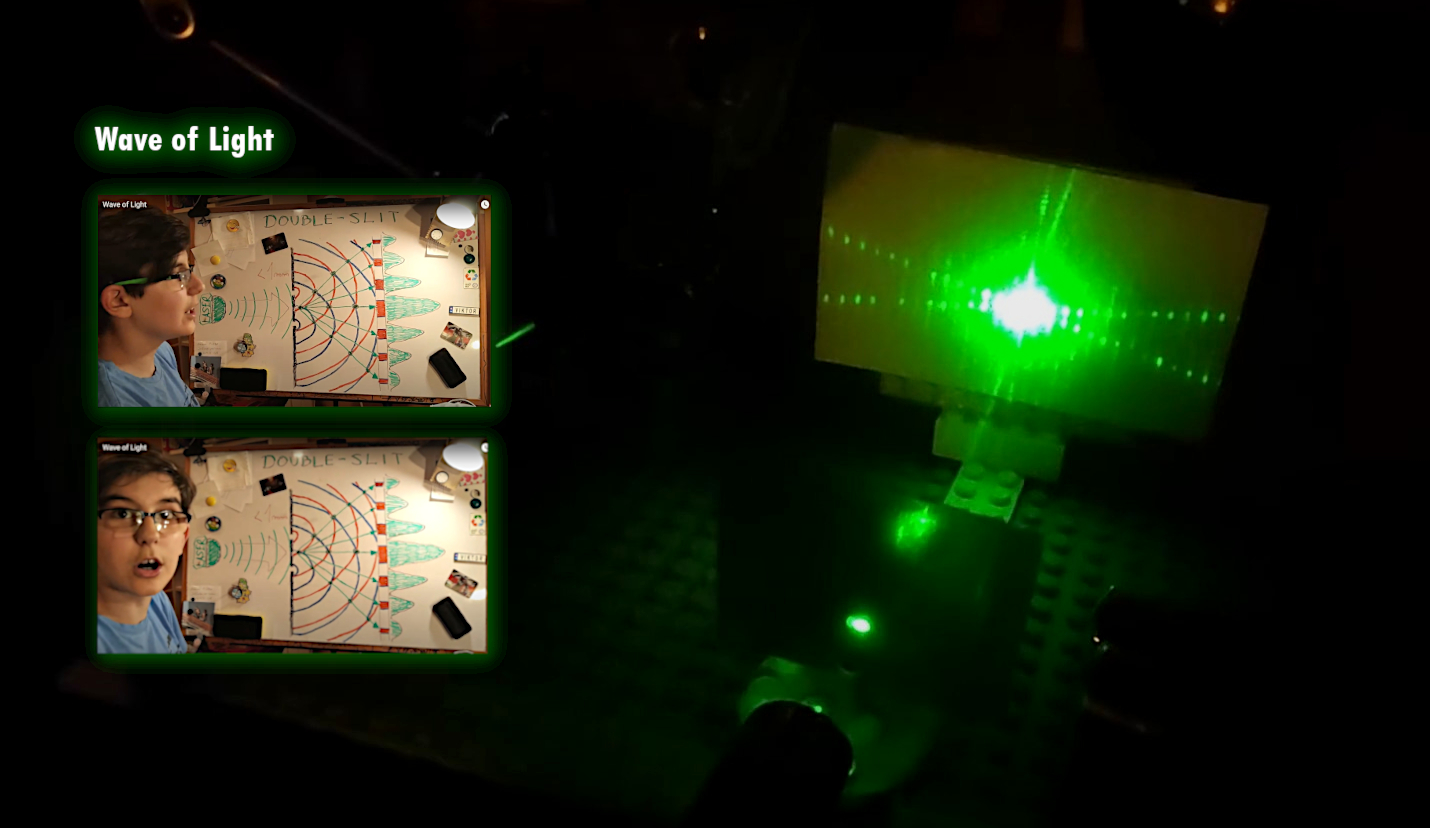Reality of Double-Slit Experiment
Thanks to the outcome of the experiment, we know that light is capable of doing both. It always travels in a wavelike fashion, even if we shoot photons in a row towards slits, one after another. The quantum mechanics explanation is that photons are in superposition, meaning they can exist in different states and even multiple places at the same time. The weirdness comes 'only' if we try to tag particles with pass-through detectors in order to detect which slit they are choosing to go through. At that instant, they break superposition and continue to travel as macro-objects, just like bullets.
This is very similar to the coin flipping or well-known Schrödinger's cat from the macroworld analogy. If we use quantum terminology, these two are in a simple binary superposition; they both have only two outcomes, the coin ending either head or tail or the cat's version being either dead or alive. Superposition in a double-slit experiment is way more complex as far for the photons being in multiple places at the same time between the slits and the detection wall.
However, the weirdness is only present at the quantum level of the microworld, and in the case of light in the double-slit phenomenon, the puzzle is not the nature of how light travels but rather why it behaves the way it does in the moment of being observed. Certainly, it creates profound questions for which we still have no definite answers. The most interesting one is, did we find the puzzle here that shows us how nature really works? What is the reality behind the engine in the quantum world? More important is even the question: is this reality objective throughout the universe, or is it subjective and created for the observer only?
Let's think about the reality problem for the moment first. This behavior of breaking superposition for the sake of the observer is very reminiscent of graphically demanding video games in which the reality is never objective—the scenes are always rendered for the gamer's sensory inputs. If you play those kinds of games and decide to enter a closed room through the door, the room and everything in it don't exist at all until you open the door. Only then does the CPU start creating it for you, and there's a certain superposition of the room and your actions in it that breaks to only one outcome, depending on what you do.
Now, double-slit is too complex to test it this way, but binary superposition could be simple enough to create in the lab in quantum equivalent and monitor what happens. This is what the experiment made by Massimiliano Proietti and his team at Heriot-Watt University in Edinburgh tried to perform on a small-scale quantum computer made up of three pairs of entangled photons. The idea is to experimentally test Wigner's thought experiment of an observer of the quantum outcome being also observed by a second observer. The resulting statements of the two observers are that their interpretations of the outcome contradict each other. The same happens in the lab, with entangled photons in the role of non-conscious observers—the inequality in the data is definitely violated, which points in the direction that quantum mechanics might indeed be incompatible with the assumption of objective facts. To put it simply, multiple observers of the same event can have different outcomes as the process in superposition breaks in different patterns. Just like in video games, the reality of nature could also be subjective and rendered for the observer's eyes only.
Well, if you ask me, consciousness or not, if we go this path with reflection to the original double-slit experiment, it is all going toward the direction that the unobserved world only exists in a sort of superposition state, all possibilities of all possible outcomes only waiting for an observer to disrupt it to the point of the ultimate collapse as the result of the reaction between the two processes and the observer. The light is no different; its wave-like behavior is its own superposition only waiting for somebody to play with. Preferably with lasers and Lego cubes, just like in the above YouTube video. Science is fun, perhaps because it is so mysterious from occasion to occasion. I know I had tons of fun creating this video with my son a couple of years ago. Please find more stories within the physics thread of the blog in the below link.
Strange world of physics at MPJ:
https://www.mpj.one/search/label/physics
Science refs:
https://www.youtube.com/watch?v=h75DGO3GrF4
https://en.wikipedia.org/wiki/Wigner%27s_friend
https://phys.org/news/2019-11-quantum-physics-reality-doesnt.html
https://arxiv.org/abs/1902.05080




























